Salix gooddingii, Goodding's Willow
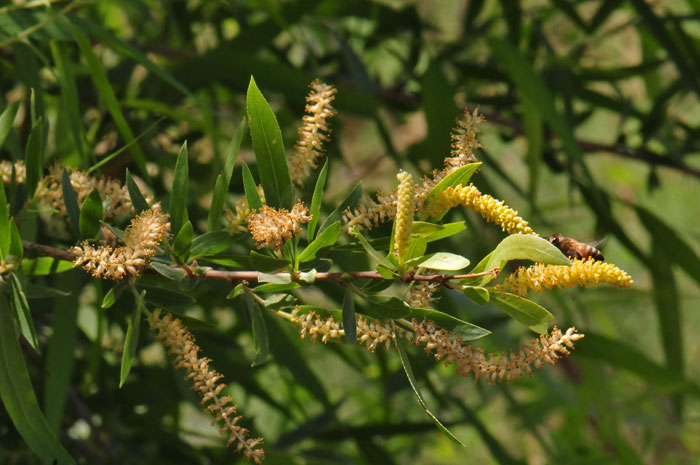
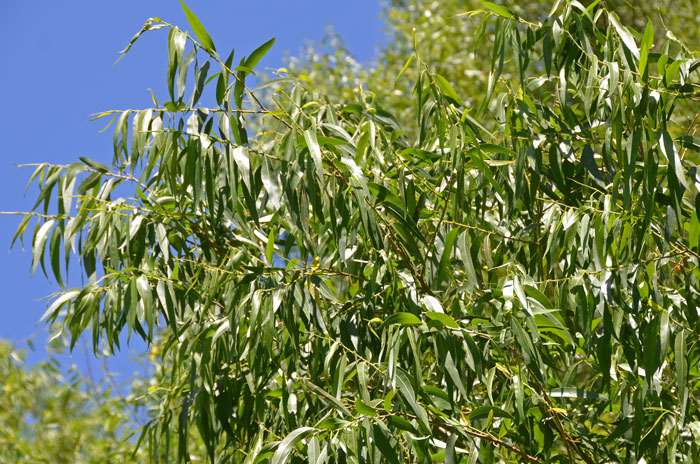
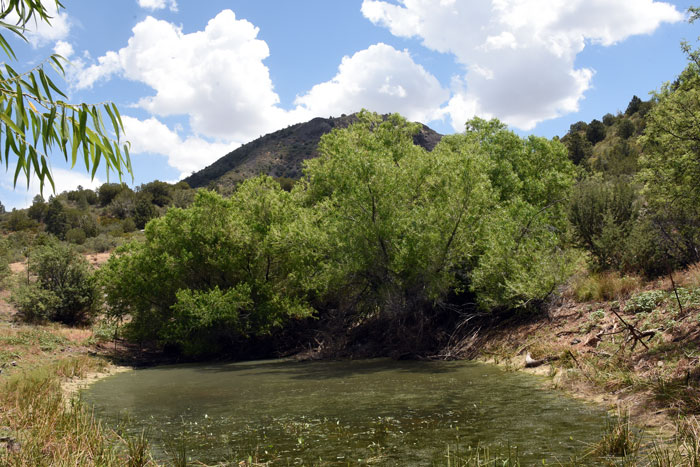
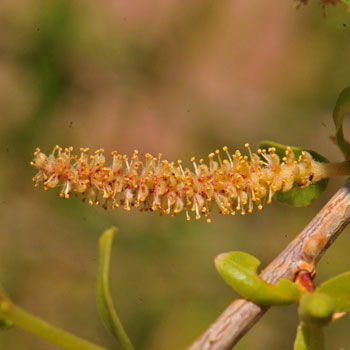
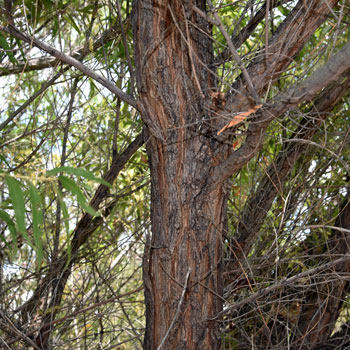
Scientific Name: Salix gooddingii
Common Name: Goodding's Willow
Also Called: Dudley Willow, Goodding Willow, Goodding's Black Willow, Gooding Black Willow, Valley Willow, Western Black Willow, (Spanish: Sauce, Sauz)
Family: Salicaceae or Willow Family
Synonyms: (Salix gooddingii var. vallicola, Salix gooddingii var. variabilis, Salix nigra var. vallicola, Salix vallicola)
Status: Native
Duration: Perennial
Size: Up to 60 feet or more (90'), usually much less.
Growth Form: Tree, shrub; fast growing, trunk diameter 30 inches, mature bark brown, thick, rough and with deep furrows (see photo); twigs yellowish, fine hairs become glabrous.
Leaves: Green, light green; deciduous, leaves large, 2 to 4 inches or so; narrowly lanceolate, narrowly elliptic or narrowly ovate, petioles have glands at base; margins serrate.
Flower Color: Green or brawny and inconspicuous; flowers are on catkins; male and female flowers on separate trees (dioecious); inflorescence catkins emerges with leaves; dioecious; fruits capsular
Flowering Season: March to April.
Elevation: Up to 7,000 feet; lower elevations in California, often below 1,500 feet.
Habitat Preferences: Riparian areas; rivers, streams, marshes, washes, creeks, stock tanks and seeps or moist areas; often dominate species or co-dominate with Fremont Cottonwood.
Recorded Range: Goodding's Willow is found in the southwest United States in AZ, CA, NM, NV, TX, UT. It is also found in Baja California and northern Mexico. In Arizona is occurs throughout the state.
North America & US County Distribution Map for Salix gooddingii.
U.S. Weed Information: No information available.
Invasive/Noxious Weed Information: No information available.
Wetland Indicator: No information available. In North America Salix gooddingii has the following wetland designations: Arid West, FACW; Great Plains, FACW; Western Mountains, Valleys, and Coast, FACW.
FACW = Facultative Wetland, usually occur in wetlands, but may occur in non-wetlands
Threatened/Endangered Information: No information available.
Genus Information: In North America there are 171 species and 200 accepted taxa overall for Salix. Worldwide, The Plant List includes 552 accepted species names with 963 infraspecific rank for the genus.
In the Southwestern United States, Arizona has 19 species of Salix, California has 30 species, Nevada has 23 species, New Mexico has 24 species, Texas has 8 species and Utah has 27 species. All data is approximate and subject to taxonomic changes.
Comments: Salix gooddingii, or Goodding's Willow is found in a variety of habitats including desert shrub, chaparral and pinyon juniper. This species as with other dominant riparian species, provides important shade in dry desert and upland areas. Goodding's Willow also provides browse, cover and food for insects and wildlife especially beavers.
Goodding's Willow is common in southwestern United States deserts where it is found along streams commonly with Arizona Walnut (Juglans major), Fremont Cottonwood (Populus fremontii) and Arizona Sycamore (Platanus wrightii).
In Southwest Desert Flora also see Narrowleaf Willow, Salix exigua and Peachleaf Willow, Salix amygdaloides.
In general, willows of the genus Salix provide excellent browse for livestock and provide important shade in many geographic locations where bright sun and high temperatures cause problems.
For a comprehensive and thoroughly documented review of Goodding's Willow, Salix gooddingii see the USDA USFS Fire Effects Information System, or FEIS.
See all ethno-botanical uses at Native American Ethnobotany, University of Michigan, Dearborn.

